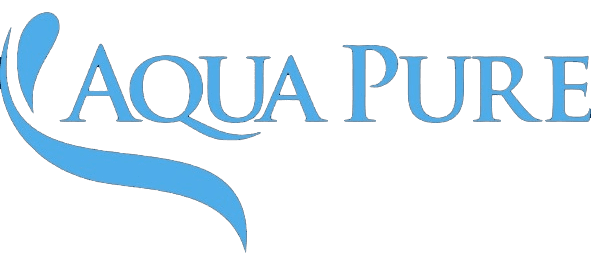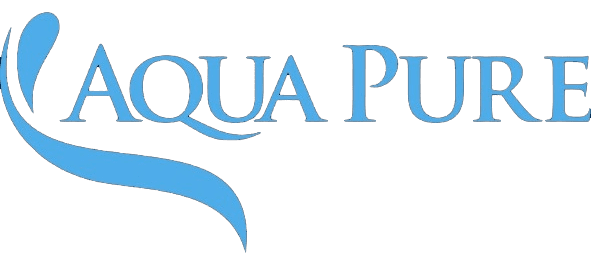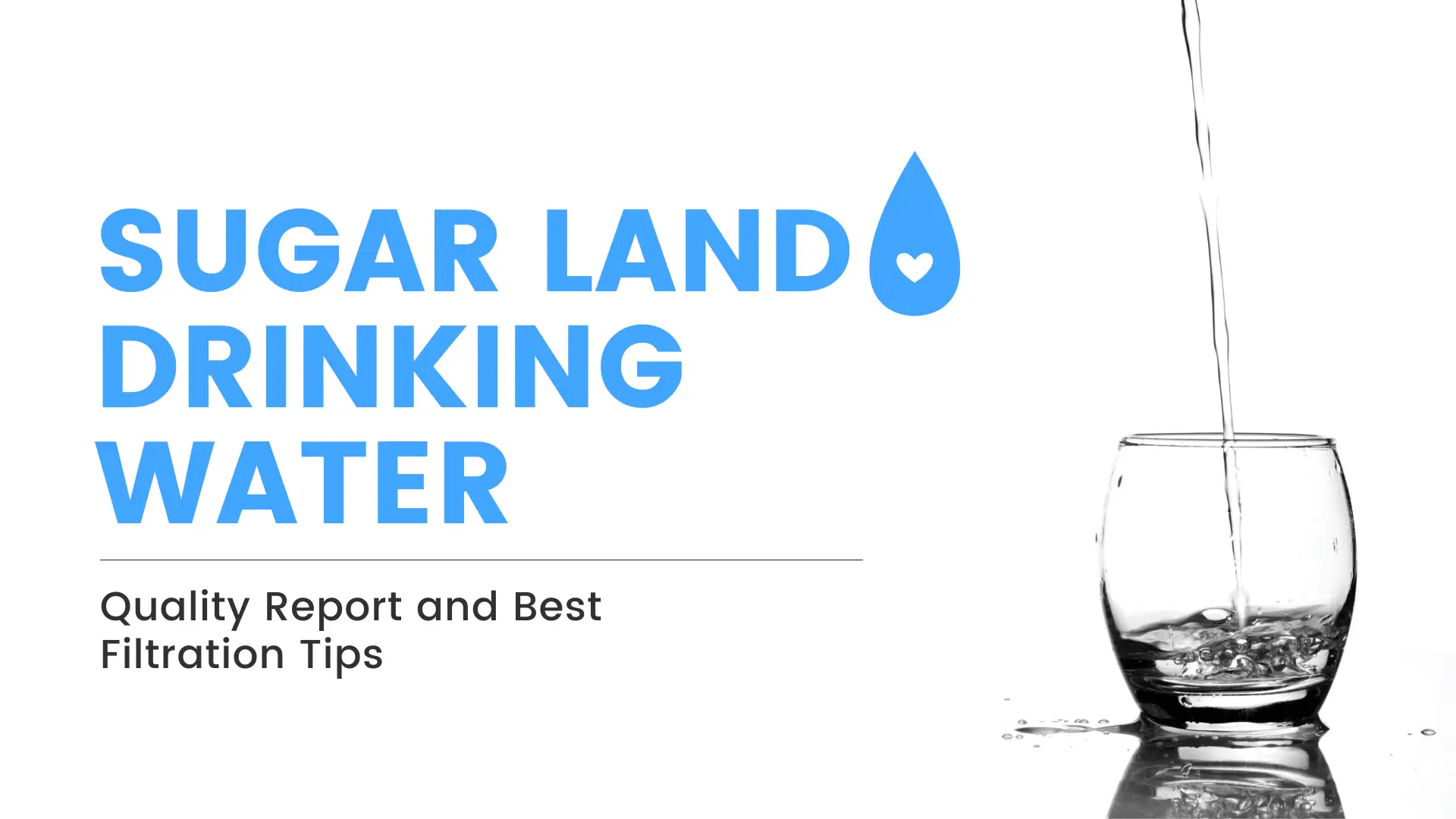If you live in Sugar Land, you’ve probably noticed two things about your tap water: it generally tastes clean, and it can leave some spots on faucets and glassware. That’s because Sugar Land’s water is carefully treated and monitored, yet naturally contains “hardness” minerals like calcium and magnesium. In this guide, we’ll walk through what’s actually in Sugar Land’s water (with the latest city data), what it means for your health and home, and exactly how to test and improve your water with the right filters or softeners—without the fluff or scare tactics.
Quick takeaways (for the busy reader)
1) Safety:
Sugar Land reports that drinking water meets all state and federal standards across its four systems (Main, River Park, New Territory, Greatwood).
2) Source & disinfectant:
- Main System (most of the city east of the Brazos): blend of surface water (Brazos River/Oyster Creek) and groundwater; disinfected with chloramine.
- River Park, New Territory, Greatwood: groundwater from the Chicot/Evangeline aquifers; disinfected with chlorine.
3) Hardness
Typical total hardness ~103–125 mg/L (6–7.3 gpg) depending on system—moderately hard (scale on fixtures and appliances).
4) Common taste/odor drivers
Disinfectant (chlorine/chloramine) and low levels of by-products; both are within regulatory limits.
5) PFAS
UCMR5 testing shows short-chain PFAS (e.g., PFPeA, PFHxA, PFBA) detected at parts-per-trillion levels in some samples; PFOA/PFOS were non-detect to ~4 ppt (around the new EPA MCL). Point-of-use RO or specialized carbon/AIX can reduce PFAS.
Where Sugar Land’s water comes from—and why that matters
Sugar Land operates four separate public water systems that are not interconnected. Each system’s water quality is reported separately in the city’s annual Consumer Confidence Report (CCR).
- Main System (PWS 0790005): A blend of treated surface water (Brazos River via Oyster Creek at the city’s Surface Water Treatment Plant) and groundwater. Disinfected with chloramine (a stable blend of chlorine and ammonia).
- River Park, New Territory, Greatwood: Groundwater wells from the Chicot and Evangeline Aquifers; disinfected with free chlorine.
Why this matters:
- Taste & odor can differ slightly by system (chloramine vs. chlorine).
- Hardness is typically driven by groundwater mineral content—so groundwater-heavy systems tend to leave more spots, film, and scale.
Filter choice (e.g., catalytic carbon for chloramine) depends on your system.
What’s in the water? Key parameters from the latest CCR
Sugar Land’s 2024 Water Quality Report summarizes routine testing. A few highlights many residents ask about:
1) Hardness (scale)
- Main System: Total hardness average ~125 mg/L as CaCO₃ (range ~118–131). That’s about 7.3 grains per gallon (gpg)—moderately hard.
- Greatwood: ~103 mg/L (~6 gpg). Similar ranges apply across systems.
What you’ll notice: white spots on glass and fixtures, film on shower doors, reduced soap lather, and gradual scale in water heaters, dishwashers, and coffee makers.
Appliance impact: Even moderate hardness lowers energy efficiency of tank and tankless heaters and shortens appliance life due to scale buildup.
2) Disinfection and by-products (taste/odor & health perspective)
- Main System disinfectant: Chloramine; other systems use chlorine.
- By-products: TTHMs around ~5–8 ppb and HAA5 around ~5 ppb, well under respective MCLs (80 ppb for TTHMs, 60 ppb for HAA5).
Health angle: By-products are regulated to very low levels. Sensitive individuals sometimes report taste/odors or skin dryness. (For context, chloramine is widely used because it’s more stable in long pipe networks.)
3) Nitrate (fertilizer runoff signal)
Reported up to ~2.35 mg/L as N in the Main System—below the 10 mg/L MCL.
4) Lead & copper (from household plumbing)
Lead 90th percentile ~2.54 ppb with 0 sites above the 15-ppb action level; copper 90th percentile ~0.291 mg/L with 0 sites above action level. (Lead and copper typically come from home plumbing, not the source water.)
5) PFAS (the “forever chemicals”)
Sugar Land posts UCMR5 results; short-chain PFAS such as PFPeA, PFHxA, PFBA were detected in some samples at parts-per-trillion levels. PFOA showed ~4.0–4.1 ppt in a few samples (i.e., at the EPA MCL of 4 ppt); PFOS was non-detect in those tables. Detection varies by site and sampling event.
In April 2024, the EPA finalized national PFAS drinking water standards: MCLs of 4 ppt for PFOA and PFOS, 10 ppt for PFNA, PFHxS, and GenX, plus a hazard index for mixtures including PFBS. (Regulatory timelines and implementation details continue to evolve.)
What to do about PFAS at home: For point-of-use drinking water, reverse osmosis (RO) and certified granular/catalytic carbon or anion exchange (AIX) filters are your best bets.
How those contaminants feel at home
- Hardness minerals (calcium, magnesium): Soap scum, dull hair/skin feel, white scale, clogged aerators, reduced heater efficiency.
- Chlorine/chloramine: Taste/odor; some people with sensitive skin say they notice dryness or irritation. (Public-health agencies note chloramine is effective and stable in distribution; exposure from showering is generally considered minimal compared to pools, but taste/sensitivity concerns at home are common.)
- Disinfection by-products (TTHMs/HAA5): Present at low levels locally and regulated; carbon filtration improves taste and reduces precursors.
- PFAS: Trace-level detections are increasingly common nationwide; point-of-use RO/carbon can meaningfully reduce them while utilities work under new standards.
The smartest way to test your water
- Start with the city’s CCR to understand baseline quality for your system (Main vs. River Park vs. New Territory vs. Greatwood).
- At home, test where you drink and cook. If you have older plumbing or brass fixtures, grab a simple lead test.
- If you’re on the Main System and sensitive to chloramine, consider testing free chlorine, total chlorine (monochloramine), and chloramine residual at the tap.
- For skin/scale issues, test hardness, alkalinity, and TDS.
- PFAS: If you want certainty for baby formula, pregnancy, or peace of mind, select a lab test that includes EPA Method 533/537.1 for PFAS.
- Whole-home vs. point-of-use: Decide based on your goals. If taste, coffee, and cooking are the focus, treat one faucet. If you want scale prevention and better showers/laundry, go whole-home.
➡️ Prefer a professional check? You can request a free water test or quote and we’ll bring test strips/meters for hardness, chlorine/chloramine, and TDS—and help you decide if lab testing for PFAS or metals makes sense.
Best filtration and softening options for Sugar Land
Your ideal setup depends on your system (chlorine vs. chloramine), water goals, and home layout. Below are proven combinations that match Sugar Land conditions.
1) For better taste & odor (drinking/cooking)
- Under-sink reverse osmosis (RO):
- What it does: Excellent for PFAS, TDS, many metals, nitrate, and chlorine/chloramine by-products; leaves water crisp-tasting.
- Maintenance: Pre/post carbon filters annually; RO membrane every 2–3 years (usage-dependent).
- Who it’s for: Families mixing formula, sensitive individuals, serious coffee/tea folks, or anyone wanting the broadest reduction.
- Under-sink carbon block (NSF/ANSI 42/53/401):
- What it does: Targets chlorine taste/odor, many DBPs, some organics, pesticides, and lead (if certified for it).
- Catalytic carbon is ideal if you’re on the Main System (chloramine); look for units that state chloramine reduction.
- Fridge filters: Convenient, but often less robust than dedicated RO/carbon systems. Great as a polish, not a primary barrier for PFAS or lead unless specifically certified.
2) For whole-home comfort & appliance protection
- Traditional ion-exchange water softener (salt or potassium):
- What it does: Exchanges hardness minerals for sodium/potassium ions—stops scale, improves soap performance, keeps heaters efficient.
- What it doesn’t do: Doesn’t remove chlorine/chloramine, PFAS, or most organics; pair with carbon for that.
- Sizing: Match to hardness (≈6–7.5 gpg typical here), household size, and flow demand (showers + laundry + dishwasher).
- Maintenance: Periodic salt/potassium refills; occasional resin cleanings if iron present.
- Whole-home carbon (catalytic recommended for Main System):
- What it does: Reduces chlorine/chloramine, taste/odor, and some DBP precursors—better showers, less rubber/elastic degradation in laundry.
- Tip: For chloramine, make sure the media and contact time are designed for it (catalytic carbon, larger media beds, slower flow rates).
- Sediment pre-filtration (5–20 micron):
- Protects downstream carbon/softener equipment and your fixtures from grit.
- Tankless heater owners: Softening is high-value—it prevents heat-exchanger scale, preserving efficiency and warranty compliance in many cases.
Want help picking the right sizes and media? See Water Treatment Solutions and Water Softeners or request a free water test.
3) For PFAS-focused households
- Point-of-use RO at the kitchen is the most practical first step.
- If you want non-RO options, look for certified PFAS reduction claims using granular/catalytic carbon or anion exchange (AIX). (PFAS performance varies widely—stick to verified lab data.)
4) Shower and skin comfort
- Whole-home catalytic carbon (for chloramine taste/odor) + softener (for hardness feel and soap efficiency) makes showers noticeably nicer.
- Showerhead filters: Can reduce chlorine; few are effective for chloramine—verify claims. If you’re sensitive on the Main System, a whole-home carbon unit is the reliable path.
Putting it together: Three Sugar Land setups that work
- Taste & drinking water upgrade (budget-friendly)
- Under-sink carbon block (chloramine-rated if on Main System).
- Optional fridge filter as a polish.
- Who it’s for: Renters, apartments, or anyone who mainly cares about taste.
- Whole-home comfort + appliance protection (most popular)
- Sediment pre-filter → Whole-home catalytic carbon (for chlorine/chloramine) → Water softener (for scale).
- Add a kitchen RO if you want PFAS/TDS reduction for drinking and cooking.
- Who it’s for: Families, tankless heater owners, folks tired of spots/scale.
- PFAS-conscious kitchen
- Under-sink RO (with remineralization cartridge if you prefer a neutral taste).
- Optional whole-home carbon/softener for comfort.
- Who it’s for: Households mixing infant formula, immunocompromised individuals (talk with your clinician), or anyone wanting an extra margin on emerging contaminants.
Maintenance tips that save money (and water)
- Change pre-filters on time. A $20 sediment cartridge protects $1,000+ in downstream equipment.
- Check bypass valves after service—half the “my filter isn’t working” calls are bypass issues.
- Drain and descale tank/tankless heaters per manufacturer guidance; softening reduces frequency.
- Sanitize RO systems annually when you change filters.
- If you travel often: Set softener to vacation mode (or lower regeneration frequency).
- Monitor pressure. A clogged carbon or sediment filter drops pressure—replace before it stresses pumps or fixtures.
When should you consider professional help?
- You’re not sure which system you’re on (Main vs. River Park vs. New Territory vs. Greatwood). Treatment choices differ.
- Persistent odors or color changes that don’t track with the city’s notices.
- Older plumbing with potential lead solder/brass—consider a lead screen and tailored cartridge selection.
- PFAS concerns—we’ll help you pick a certified RO or carbon/AIX unit based on lab data.
👉 Next step: Request a free water test or quote. We’ll check hardness, chlorine/chloramine, and TDS at your taps, confirm your system, and size equipment correctly—no pressure.
Local Concerns:
Q1) Is Sugar Land tap water safe to drink?
Q2) Does Sugar Land use chlorine or chloramine?
Q3) How hard is the water, and do I need a softener?
Q4) What about PFAS in Sugar Land?
Q5) Will boiling water remove PFAS, chlorine, or hardness?
Q6) I’m on the Main System and have dry skin. What helps?
Q7) Is the city’s water fluoridated?
Q8) We live in New Territory. Is our water different?
Q9) Do fridge filters remove PFAS?
Q10) How can I see the city’s latest results?
Friendly, expert help—zero pressure
If you’re ready to get specific about your kitchen tap or whole-home setup, we’ll test your water, confirm your system, and size equipment for your flow rate and family size:
- Explore Water Treatment Solutions
- Compare Water Softeners
- Or simply request a free water test or quote
We’ll keep it practical, local, and tailored to Sugar Land.



